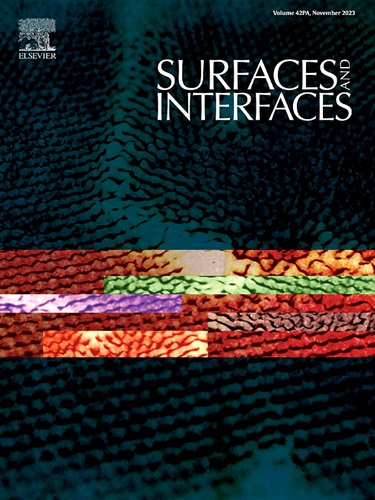Deciphering the alignment of vertically aligned multi-walled carbon nanotubes in wet state using surface enhanced Raman spectroscopy
IF 5.7
2区 材料科学
Q2 CHEMISTRY, PHYSICAL
引用次数: 0
Abstract
Vertically aligned multi-walled carbon nanotubes (VA-MWCNTs) display a structural transformation when transitioning from dry to wet states, often collapsing into angled conical structures. This study probes whether such a transition arises inherently from liquid immersion or because of the drying process. Utilizing Surface Enhanced Raman Spectroscopy (SERS) with gold caps on VA-MWCNTs tips, deposited through a modified Glancing Angle Deposition (GLAD) technique, and Rhodamine 6 G as a molecular probe, we analyze the alignment dynamics of VA-MWCNTs between their wet and dry states. Comparative SERS data from freshly immersed and previously wetted-dried VA-MWCNTs revealed superior Raman enhancement in the angled conical structures. Hence, we conclude that the nanotubes largely retain their vertical stance in liquid environments but undergo an irreversible deformation during the drying process due to (partial) MWCNT severance from the substrate base. This insight is pivotal for applications sensitive to VA-MWCNTs' wet-dry transitions.

求助全文
约1分钟内获得全文
求助全文
来源期刊

Surfaces and Interfaces
Chemistry-General Chemistry
CiteScore
8.50
自引率
6.50%
发文量
753
审稿时长
35 days
期刊介绍:
The aim of the journal is to provide a respectful outlet for ''sound science'' papers in all research areas on surfaces and interfaces. We define sound science papers as papers that describe new and well-executed research, but that do not necessarily provide brand new insights or are merely a description of research results.
Surfaces and Interfaces publishes research papers in all fields of surface science which may not always find the right home on first submission to our Elsevier sister journals (Applied Surface, Surface and Coatings Technology, Thin Solid Films)
 求助内容:
求助内容: 应助结果提醒方式:
应助结果提醒方式:


